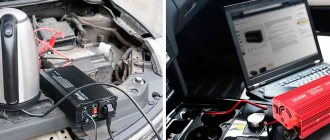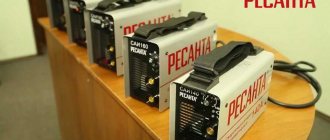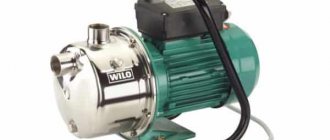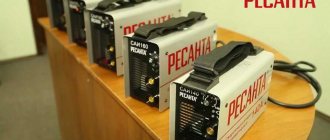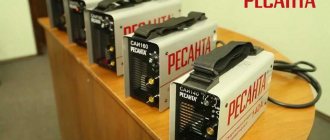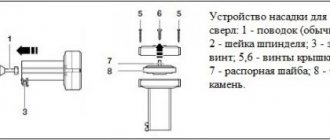Owners of most types of businesses know firsthand how much space paper waste .
Boxes, paper and documents, even when neatly folded, fill a lot of usable space, despite their low overall density and light weight.
Unpressed waste paper is extremely inconvenient to store and even more inconvenient to transport .
To eliminate these inconveniences, entrepreneurs acquire waste paper presses.
Features of application
The main purpose of a waste paper press is to prepare various paper and plastic waste from production, trade, scientific and administrative activities for recycling.
The waste paper press works with materials such as:
- Paper in all types: single sheets, brochures, books, drawings of various formats, posters.
- Used wrapping paper.
- Boxes made of regular and corrugated cardboard.
- Plastic bottles and canisters.
A cardboard and paper press can also prepare other materials characterized by low bulk density and low strength for recycling.
Pressed waste paper
Tightly compressed bags of standard size are convenient to store - they occupy up to 20 times less area and volume compared to uncompressed waste.
The transportation of such waste to the disposal site is also significantly easier and cheaper.
Working force of baling press
The greater the force, the denser the bale will be. But the main attention should be paid not to tons, but to the specific pressure of the pressing (working) plate, because it is the pressure that ensures the density of the bale. With the same piston force, more pressure will be created by a plate with a smaller area.
The force is especially important for forming bales of cardboard or plastic bottles, because... significant effort is required to compress them.
To protect the hydraulics, a pressure limiting relay or electronic control is used.
Technological capabilities of hydraulic presses for waste paper
When choosing a waste paper press, it is necessary to analyze the following parameters:
- Volume of the bale chamber.
- Performance.
- Drive power (for hydraulic and mechanical systems).
- Pressing force.
- Maximum density of pressed materials.
- Energy consumption per unit of production.
- Dimensions and possibility of transportation.
The maximum density depends on the force. The higher the force, the denser the material the cardboard and paper press can handle.
Advantages
When installing, the owner:
- significantly reduces storage space for recyclable materials;
- reduces transportation costs for subsequent processing;
- receives money upon sales to collection points;
- saves energy in the enterprise thanks to innovative developments.
For a long time we have been cooperating with well-known European manufacturers. All equipment presented in the catalog has passed multi-level quality control and certification. To get advice from managers and buy a horizontal press, call the contact number.
Kinds
Over many years of working with paper waste, engineers have developed many designs of waste paper presses. They differ:
- By drive type.
- By size.
- By download type.
- By pressing force.
- By volume and effective area of working chambers.
- According to the degree of mobility.
According to the type of drive, which determines other design features, a cardboard press can be:
- hydraulic;
- mechanical;
- hydromechanical.
Mechanical presses include manually driven presses.
By size they are distinguished:
- compact;
- standard;
- professional.
The loading method can be horizontal or vertical.
Most small and standard size devices use a vertical loading method. Horizontal is more typical for large-sized stationary high-power devices that use a continuous operating cycle.
Mobile press for waste paper
Installations are also divided into stationary and mobile. Stationary ones are distinguished by greater power and a permanent place of work; paper is transported to the place of their installation. Mobile ones, on the contrary, deliver to places where paper waste accumulates and they work where it is needed.
Horizontal
Hydraulically driven devices on the market are small in size and have modest performance, but they can easily cope with waste paper from a small enterprise, institution or retail outlet.
Their performance characteristics are as follows:
- Press force is approximately 2 tons.
- Productivity up to 90 kilograms of paper per hour.
- Power supply: 220 volts, single phase.
- Operating temperature range: -25 +40 °C.
- Occupied area is 2×2 meters.
- The dimensions of the loading window are 0.5×0.5 meters, height 1 meter.
- The dimensions of the bale after pressing are 0.4×0.5×0.35 m, weight – from 10 to 20 kg.
Horizontal press Statiko-40
Its large size and ease of use make it possible to install such a press in the corner of a warehouse; one person can handle the work; no loading devices are required. Such devices cost from 60 thousand rubles.
Vertical
A vertical waste paper press is a more serious device with better performance characteristics:
- Press force is approximately 6 tons.
- Productivity: 3-6 bales per hour.
- Power supply: 220 volts, single phase.
- Operating temperature range: -25 +40 °C.
- Occupied area - 2x2 meters, height - 2 meters.
- The dimensions of the loading window are 0.5×0.5 meters.
- The dimensions of the bale after pressing are 0.4×0.5×0.35 m, weight – from 10 to 20 kg.
Vertical press
The high drive power allows you to press not only paper, cardboard, but also plastic and waste from rolled ferrous and non-ferrous metals up to 1.5 mm thick. This device can also be operated by one person, but for effective operation it will be necessary to equip the workplace with hoists or a hoist. The unit will cost from 70 thousand rubles.
Baling
Baling systems are purchased by specialized companies for processing and receiving waste paper and secondary raw materials, as well as enterprises with large volumes of paper and cardboard waste.
Horizontal Baling Press
This is powerful equipment with wide capabilities:
- Pressing force from 15 to 50 tons.
- High degree of compression of the material in the bale.
- Package sizes can be customized as needed.
- The package is tied with plastic or steel tapes.
- The weight of the pressed package is from 15 to 800 kg.
Such professional equipment costs from 120 thousand rubles.
Stationary
Stationary units differ:
- permanent installation location;
- large dimensions
- high drive power and working force;
- high performance;
- additional functions and equipment.
They are installed at enterprises for the reception and processing of recyclable materials or where a large volume of paper and cardboard waste is generated daily.
Stationary press at the enterprise
The place of their installation is equipped with lifting and transport equipment, and the logistics flows for the delivery of raw materials and removal of finished packages are carefully thought out.
Mobile
The mobile waste paper press is small in size, has low power and productivity. It does not require special site preparation for its installation; it is often mounted on a wheeled cart or a passenger car trailer.
Such a device is easily delivered to the waste accumulation site and, if necessary, transported to another location.
They are popular among buyers such as:
- enterprises specializing in the removal of waste paper accumulated in other companies and individuals;
- retail outlets with a large turnover of packaging containers;
- small companies recycling recycled materials.
Hydraulic
This waste paper press is driven by a hydraulic drive. They are widely used for pressing waste paper, plastic, rubber, etc. materials.
Based on the degree of automation, control systems are divided into:
- Automatic machines.
- Semi-automatic devices.
- Manual.
Hydraulic presses also differ in characteristics such as:
- Dimensions.
- Performance.
- Pressing force.
- Speed of movement of the working plate.
Hydraulic press for waste paper
Both mobile mini-devices and powerful stationary presses can be equipped with hydraulic drives of different power.
Mechanical
Mechanical waste paper presses are called manual presses. Their distinctive features compared to other types of drives:
- Small dimensions.
- Poor performance.
- Low pressing force.
- No power required.
Structurally, hand presses are divided into:
- Screw.
- Rotary.
- Eccentric.
- Lever-cranked.
Screw mechanical press
Such devices are used where the volume of waste is small and there is no economic sense in purchasing a more productive device.
Hydromechanical
These waste paper presses have both hydraulic and lever drive. Their differences are that:
- The beginning of the press stroke is characterized by high speed and low force.
- The end of the working stroke, on the contrary, is at low speed and many times increased pressing force.
- Reduced energy costs.
Such presses are widely used in mechanical engineering for pressing metal waste and are ideal for economical and high-performance processing of waste paper.
How to make a mechanical recycler
Even a high school student can construct a homemade waste paper press. A minimum knowledge of welding and, of course, safety precautions will be sufficient. Such mechanisms operate using a special screw-type drive. It can be either electromechanical or manual. The pressure force ranges from 4 to 32 tons.
Wooden cardboard press made from jack
When developing a simple mini cardboard press, the following steps are performed:
- Make a drawing with future machine parameters. You should decide on the size based on where you are going to place the recycling device.
- A rectangular iron box is attached to the bottom of the channel by welding. This is where the raw materials will be placed.
- A hinged lid is installed at the bottom of the chamber to discharge recycled material.
- Holes for ventilation are drilled on the sides of the compartment, several in a row on both sides.
- A working lever is attached to the top of the channel. Its length directly determines what effort is required to operate the device. If you don’t want to waste extra energy later, you should make it longer.
- A sheet of stainless steel, the future piston that drives the cardboard pressing machine, is attached to the pressure lever.
- A metal pipe or beam is welded in the center of the piston. The length must be optimal so that the piston eventually touches the bottom of the chamber
- Having connected all the parts, carry out a test recycling of a small batch of paper. This way you can make sure that the device is working correctly.
A mechanical press for waste paper is mounted on the wall, and the height must be determined based on your own height.
The advantages are the small size of the units, which can be placed anywhere and the weight, so anyone can lift them. Some mini models are installed in small rooms, others can be installed outdoors.
The disadvantages of many experienced craftsmen include the need to install a fuse.
How much pressure is needed to compact waste paper?
The key characteristic of a waste paper press is the force it develops. The most low-power presses with a force of 2 to 10 tons can easily cope only with highly deformable materials - paper, cardboard, polyethylene. To press stronger structural plastics, a force of 10 to 15 tons will be required. And finally, to cope with thin sheet metal, the working force must be from 15 to 30 tons.
For pressing waste paper, more powerful presses are used than 4-10 tons, when high productivity is required. It is important to understand that a more powerful press consumes much more energy, and its use must be economically justified.
Equipment dimensions
The dimensions of the press are determined by the volume of waste paper that needs to be processed.
It is reasonable to use compact devices:
- in households;
- in small institutions;
- in warehouses and retail outlets.
Systems of this class have a modest force of up to 4 tons, and can reduce the initial volume of raw materials up to three times. The system does not require permanent installation, foundation or lifting and transport equipment, it is mobile and can be easily controlled by one operator.
Standard size presses are better suited for:
- retail chains;
- logistics terminals;
- large enterprises and institutions generating large flows of paper and cardboard waste.
These devices are heavy and require reliable fastening to the floor. They develop a force of up to 15 tons and compress raw materials 4-6 times.
VAKKPRESS 2104
Professional installations justify their high cost and high energy consumption in those places where the flow of raw materials for them is very significant - a printing plant or a large logistics and distribution complex with repackaging functions.
These units weigh tens of tons and require a separate foundation and spacious and high rooms for installation. They develop a pressing force of 30 to 60 tons and compress the original waste more than tenfold.
Do it yourself
If you have limited financial resources at your disposal, but have welding and plumbing skills and the appropriate tools, then you can make a compact waste paper press with your own hands.
To make a hydraulic press with a force of up to 4 tons you will need:
- welding machine, electrodes or wire;
- metalworking tools;
- Bulgarian;
- steel profile no thinner than 5 mm for the base, frame and traverse;
- steel sheet with a thickness of at least 2 mm for the box;
- a steel plate with a thickness of at least 10 mm is the main working body of the press;
- hydraulic car jack of appropriate force;
- two springs to return the traverse to the upper position;
- design and blueprint reading skills.
First you need to make a rectangular base. Stands are welded to the sides, in the grooves of which the traverse will go. The racks are connected at the top by a crossbar. A traverse is suspended on springs between the posts, a jack is attached to it, and a plate is attached below. The box, open at the top, must be equipped with a securely locking door on one side. If a plate of insufficient thickness is deformed during operation, stiffeners are welded to it on top - longitudinal and transverse.
Operation and operating conditions
When purchasing medium to large stationary equipment, the manufacturer or its representative will typically provide training to personnel on how to operate their equipment efficiently and safely.
In addition, the presses are equipped with safety and locking systems that prevent the system from being turned on while the operator is adjusting something in the working chamber, and allow the equipment to be stopped instantly in the event of an emergency.
Waste paper presses are capable of operating in a wide range of weather conditions, including subzero temperatures. To do this, they use special all-weather lubricants and working materials.
Equipment maintenance must be carried out in strict accordance with the manufacturer's instructions. This will ensure long and high-performance operation of the device.
Occupational safety when working with a press
A hydraulic press is a dangerous machine.
If handled improperly, the press can damage your hands. A good baling press is equipped with sensors and switches that do not allow the press to be turned on when the working chamber is open. Many models have two start buttons to keep the operator's hands out of the work area.
